Hummingbird feeding mistakes mean the difference between a bountiful birding session and a sad, quiet backyard. Fortunately, these mistakes are easy to avoid with a little practice.
While you may know of common issues like not cleaning your feeder or using the wrong feed, other mistakes may elude you. If you’re not careful, you could even end up making your hummingbird visitors sick!
My guide below will cover the whole spectrum of well-known and lesser-known mistakes in hummingbird feeding.
Key Takeaways
- The most common mistake is the wrong sugar-to-water ratio, using the wrong ingredients, and letting this food go to waste with accidental spoilage.
- Other pretty common mistakes include using the wrong materials to wash the feeder as well as putting the feeder in less compatible locations, such as too close to windows.
- Less common mistakes you should still be aware of are using food dye to color the food as well as leaving your feeder out during cold nights.
1. Using the Wrong Sugar To Water Ratio
Let’s start off the list with one of the most well-known beginner (and intermediate) birding mistakes – not creating the right sugar water! The right ratio can be tricky to get correct, but it’ll become second nature with practice.
A reliable metric you can use is one part sugar to four parts water. The great thing about this recipe? You can easily adapt it no matter how many feeders you have.
For example, you can do one cup of white sugar with four parts water. You could also do a half cup of white sugar to four half cups of water.
Using too little sugar may be unappealing to a hummingbird, while too much sugar will make the mixture syrupy.
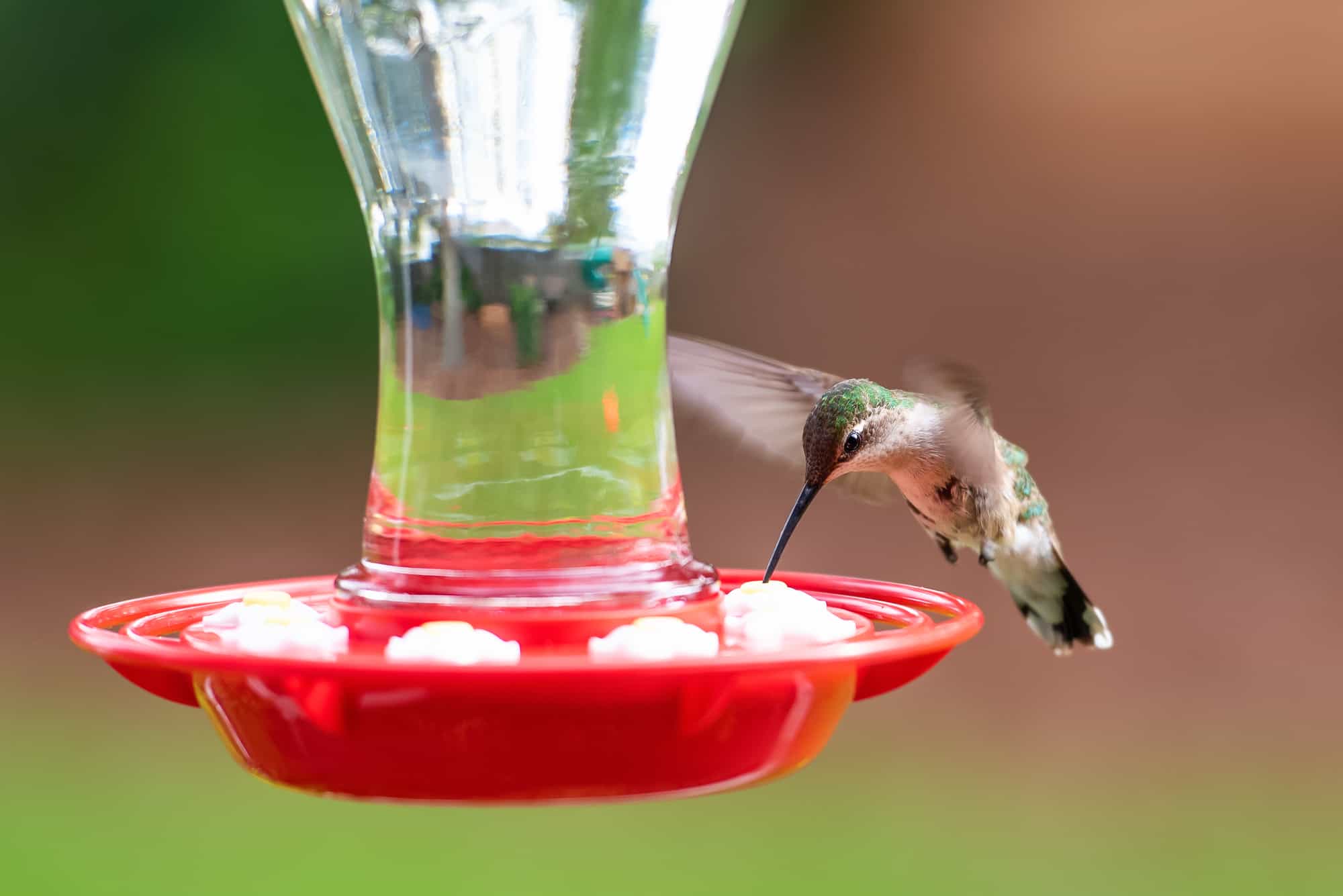
2. Using the Wrong Kind of Sugar in Your Feeder
While we’re on the subject of sugar water, let’s talk about using the right kind of sugar. You don’t need to get fancy with your hummingbird feed – refined white sugar and clean water are more than enough.
You won’t win any points for getting creative with what you stock in your bird feeder. You’ll just cause hummingbirds to eat what they shouldn’t or avoid your feeder entirely.
Steer clear of the following ingredients:
- Light brown sugar
- Dark brown sugar
- Honey
- Sugar substitutes (like Splenda)
If you’ve got a little free time, you can also plant some hummingbird-friendly plants in your garden, backyard, or front yard.

3. Using Food Coloring To Attract Hummingbirds
Another rookie mistake that can hurt your hummingbirds is using food dye to attract them. Food coloring may seem harmless, but it’s closely linked to health issues for all sorts of animals.
Recent medical research suggests common food dye can cause inflammatory bowel issues in animals and humans, among other things.
While it’s true that hummingbirds are more attracted to red, orange, and yellow colors, you don’t need food dye for that. Choosing a bird feeder with a warm color will do all the work needed to attract hummingbirds to your patio or backyard.
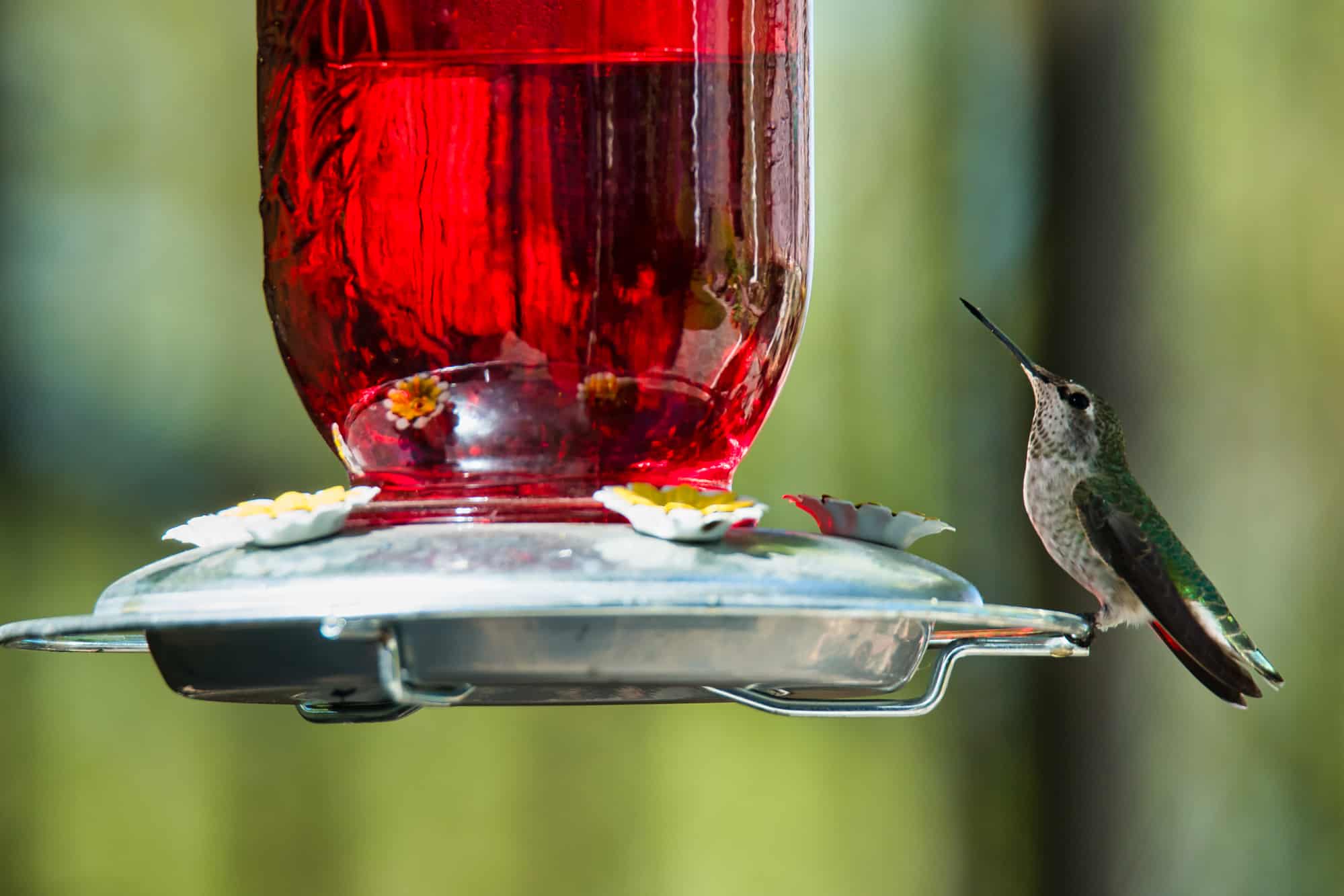
4. Not Refilling Your Feeder Regularly
If you’re a busy birder juggling family, school, or other hobbies, you may forget to fill your feeder. While the occasional slip-up won’t be a problem, constantly forgetting can have birds skipping over your backyard in favor of other options.
This step requires some trial-and-error to see how much activity you get. If you just have one feeder that only sees a little activity, refilling it every three to four days is usually enough.
However, very active feeders may need you to refill it every other day. There’s no shame in setting an alarm in your phone calendar so you don’t forget.
Refilling your feeder isn’t just a practical habit to keep birds visiting, either. You need to make sure you’re not leaving nectar to sit for long periods, leading to spoilage in the summer or freezing in the winter.
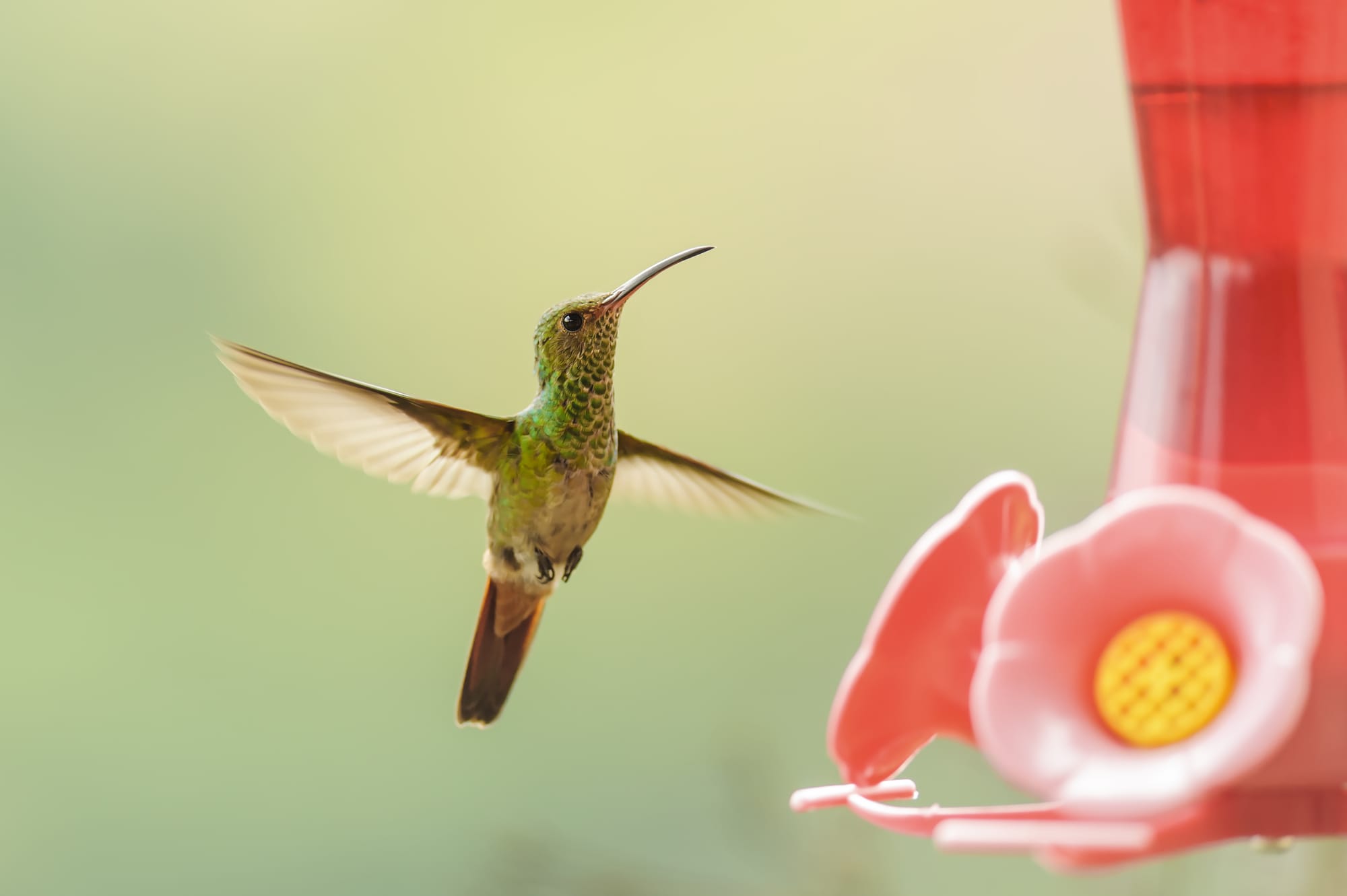
5. Not Cleaning Your Feeder Regularly
Once you get in the habit of rotating fresh hummingbird sugar water into your feeder, you’ll find it even easier to clean regularly. A clean feeder is a beloved feeder – a dirty one is the opposite!
Several issues that can create a dirty feeder include the following:
General Dirt and Grime
Hummingbirds can sometimes bring a little dirt when perching on a feeder. Over time, this activity can lead to a grimy feeder that becomes less appealing to feed at (or look at!).
Insects Crawling Around the Feeder
Insects are just as fond of bird feeders as birds are. Some of the more common insects you’ll see crawling or flying around the feeder are:
- Ants
- Flies
- Bees
- Gnats
Insects sometimes get stuck, too, and can even clog up the feeding station.
Bird Droppings
Not a pleasant detail to think about, but an important one! Bird droppings are a frustrating issue for birders and can even be a health hazard if you don’t clean them swiftly.
Bird droppings can spread various viruses and parasites if left alone. You’ll need to exercise extra caution when cleaning off your feeder, such as a bleach and water solution.
Speaking of cleaning your feeder…
6. Using the Wrong Materials To Clean Your Feeder
Rinsing off your feeder with some warm water isn’t good enough! You need to regularly use disinfectants, hot water, and a healthy scrubbing routine to keep your feeder clean.
Try the following solutions to keep your feeders clean year-round.
Perfume-Free Soap and Water Is a Well-Rounded Cleaner
Does your feeder have some dirt, dust, or gunky insects? A little perfume-free soap – such as dish soap – and water are more than suitable for the job.
Remember to take your feeder apart so you can get between the cracks for anything that might’ve slipped in. Depending on the material, you may even be able to soak your feeder for extra bacteria-fighting benefits.
Plastic and glass can be soaked, but wipe down a metal feeder thoroughly so you don’t get rust build-up. If you have any wooden parts on your feeder, make sure to dry those quickly, too — you don’t want mold!
White Vinegar Is Best for Mold
Do you suspect mold growing along your feeder? Soap and water won’t do – you’ll need to use white vinegar, a liquid that’s able to kill the mold spores so they don’t grow back again.
Vinegar is widely preferred as a tough cleaning solution since it’s safer to handle than bleach.
Bleach and Water Is a Heavy Duty Solution
If you suspect bird droppings on your feeder, bleach and water is a reliable option to keep contaminants at bay. Just make sure to wear gloves and a protective mask so you don’t accidentally splash yourself.
Remember to never mix bleach with anything other than plain water. Mixing bleach with ammonia-based cleaners or hydrogen peroxide can create toxic gases or acids.
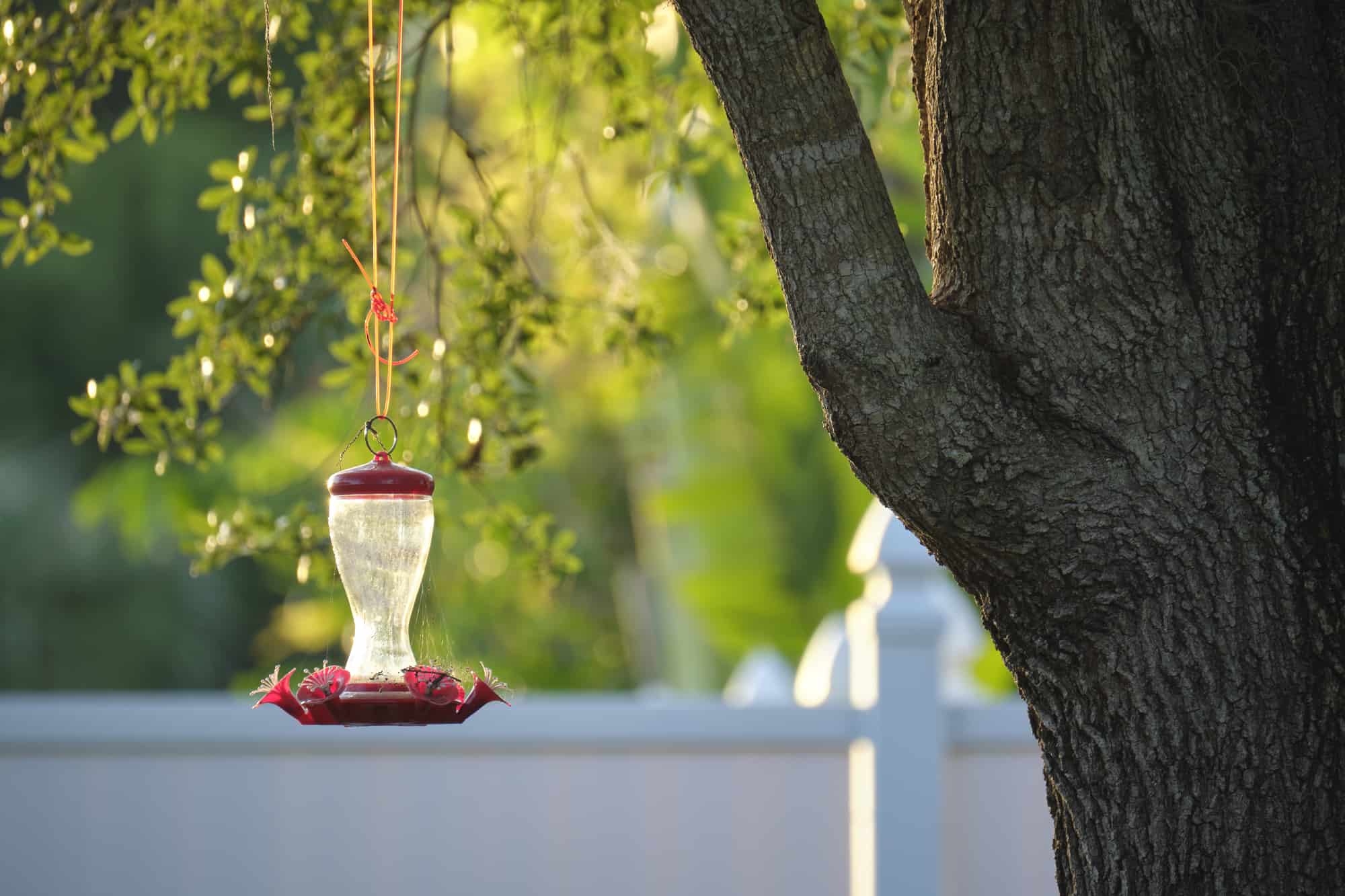
7. Not Using Feeders With Protective Features
Sometimes birders get so excited to invite birds to their backyard, that they overlook more subtle features in their feeders. Protective features can make for a more enjoyable birding session by keeping grime at bay.
Below is a quick rundown of features you should consider when purchasing a feeder:
Bee Guards
Bees are crazy about sugar water. Sadly, they can sometimes get stuck in the feeder and block the hummingbirds’ feeding station – enter the bee guard!
This feature looks like a little cage placed over the feeding ports, making it impossible for even small bees to clamber inside.
Ant Guards (or Ant Moats)
Another feature I highly recommend you keep an eye out for is the ant guard. Also known as an ant moat, many brands use a chemical mixture that attracts ants away from the sugar water.
Ant guards are easy to place above a hummingbird feeder where ants may clamber down from a branch or rooftop. Since it’s away from the food, you won’t have to worry about birds eating it.
Roof (Or Cover)
If you live in a rainy or snowy area, this little covering can keep your hummingbird friends dry. These also double as shade in the hot weather, so it’s a win-win all around.
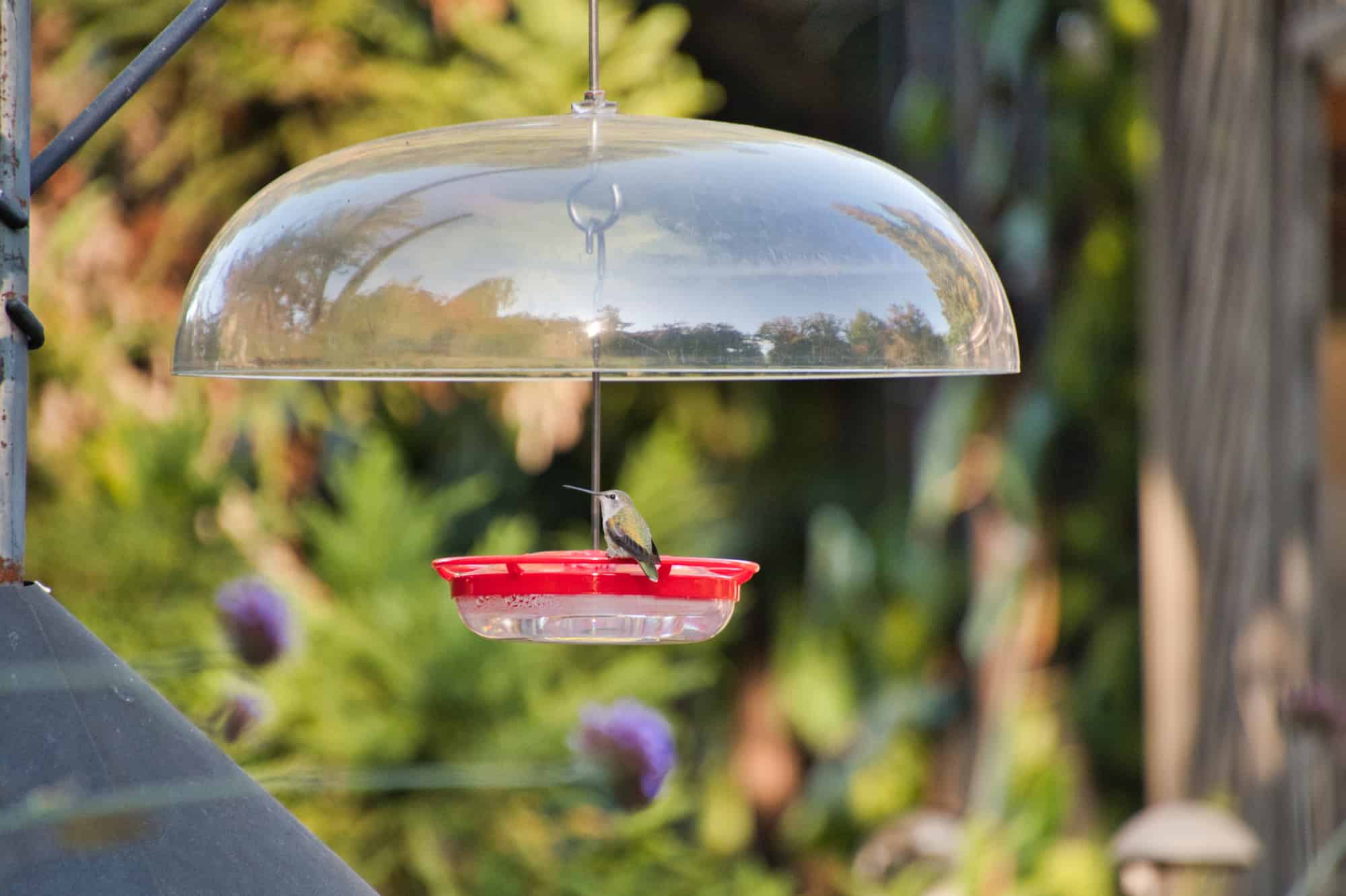
8. Putting the Feeder in Incompatible Locations
Putting your hummingbird feeder just anywhere won’t do. You need to take into account where hummingbirds are most active (as well as possible safety issues).
Below are a few pitfalls to avoid when setting up your shiny new feeder.
Too Close to a Window
If you put your hummingbird feeder too close to a window, there’s a chance your feathered visitors could collide with the glass. Birds can’t always see windows very well (and territorial birds may attack their own reflection).
Too Close To Other Bird Feeders
Familiar with the phrase ‘bully birds’? Other wild bird species may get territorial if they see hummingbirds flitting around their space, potentially shooing them off or even attacking them.
Far Away From Trees
Hummingbirds need to sometimes duck out of sight when predators or too many birds come by. Placing your hummingbird feeder near some trees will help them feel safer, encouraging them to come back for seconds.
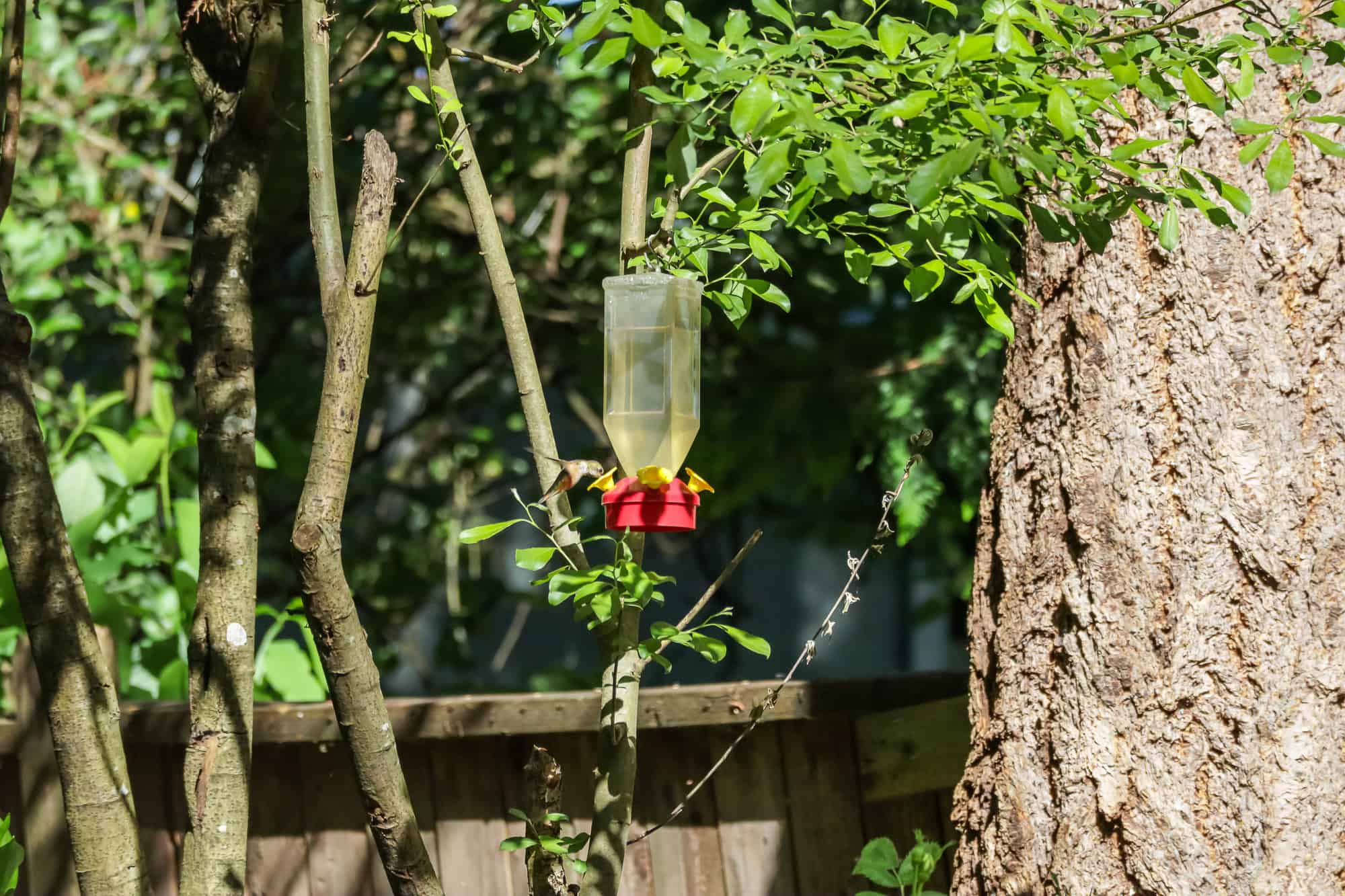
9. Setting Out Feeders in Incompatible Times
Starting to get the hang of hummingbird feeder logic? One of the more subtle details you’ll have to learn is the best times to set them up for the most lively birding sessions.
Learning the ideal time can shift depending on the needs of your state and climate. However, there are a few general tips that can help you attract a consistent amount of hummingbirds.
While most hummingbirds are scarce during the winter, some birds set out their feeders a little ahead of schedule. Leaving your feeder out during summer and early fall is your best bet.
However, you can sometimes hang up your feeder during winter if you notice an active population during the colder months. Just make sure not to miss this last tip if you do!
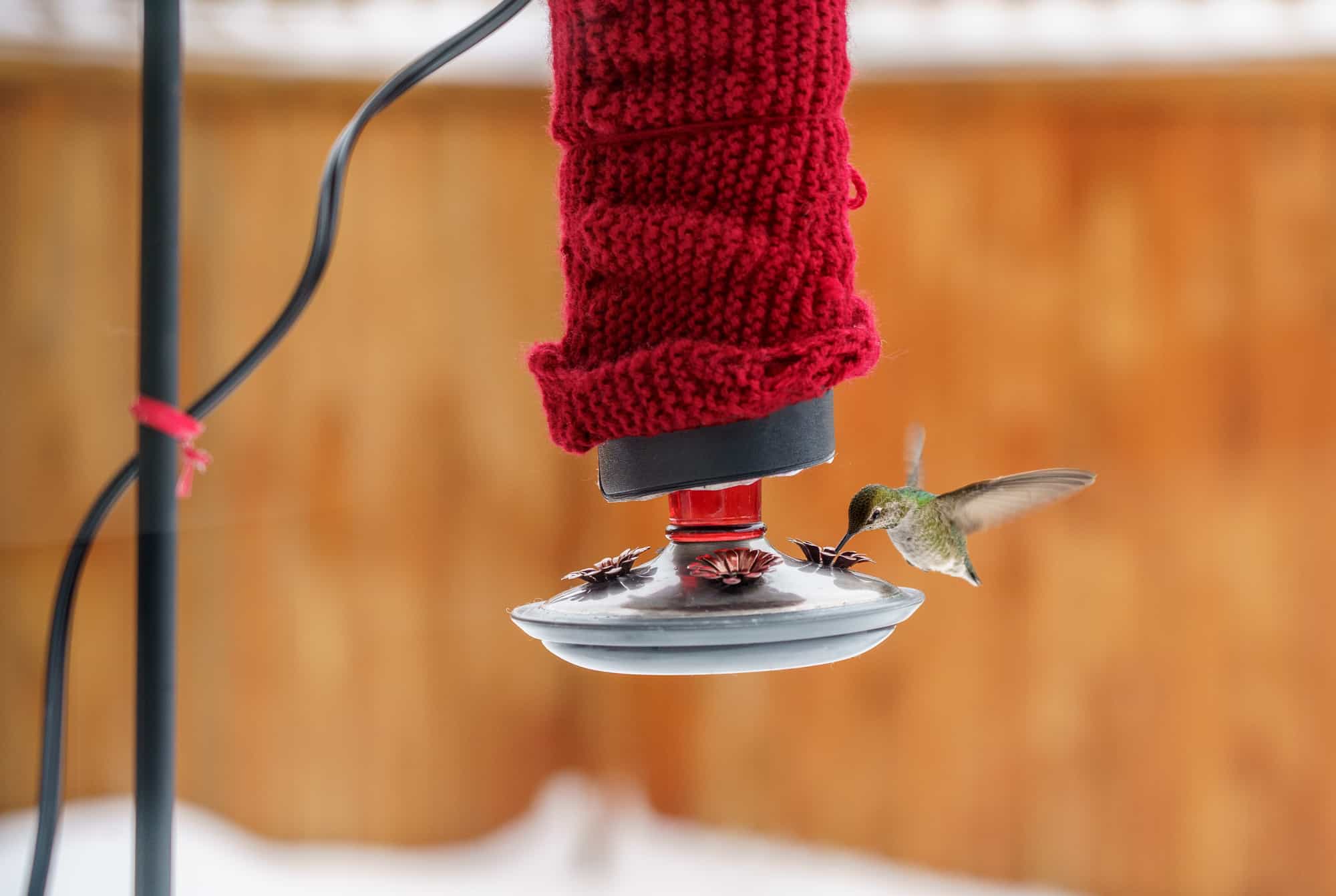
10. Leaving Feeders Out During Cold Weather or Cold Nights
Last but not least, take your feeder down once it gets cold. Several issues can happen that will impact your hummingbirds’ enjoyment and may even damage your purchase.
Metal feeders run the risk of becoming moist and cold, leading to possible rusting that can ruin your purchase. Even worse, birds may eat this rust and become sick.
Another issue that can happen is your sugar water freezing over, leaving some disappointed and hungry hummingbirds. Your feeder can also develop icicles, potentially weighing it down and making it fall.

Keep Your Birds Happy and Healthy With Good Feeding Habits
These hummingbird feeding mistakes may seem difficult to remember, but they’ll all become instinct with practice. The goal of these tips is to ensure your hummingbirds are healthy and you enjoy your hobby to the fullest.
My last tip is to always pay close attention to your hummingbirds. You may notice certain behaviors or periods of activity that could change your set-up for the better.
For example, some hummingbird populations are more active during late summer. This could mean refilling your feeders more often or even buying another to meet demand.
Want to keep learning about hummingbirds? You’ll enjoy the following posts:

